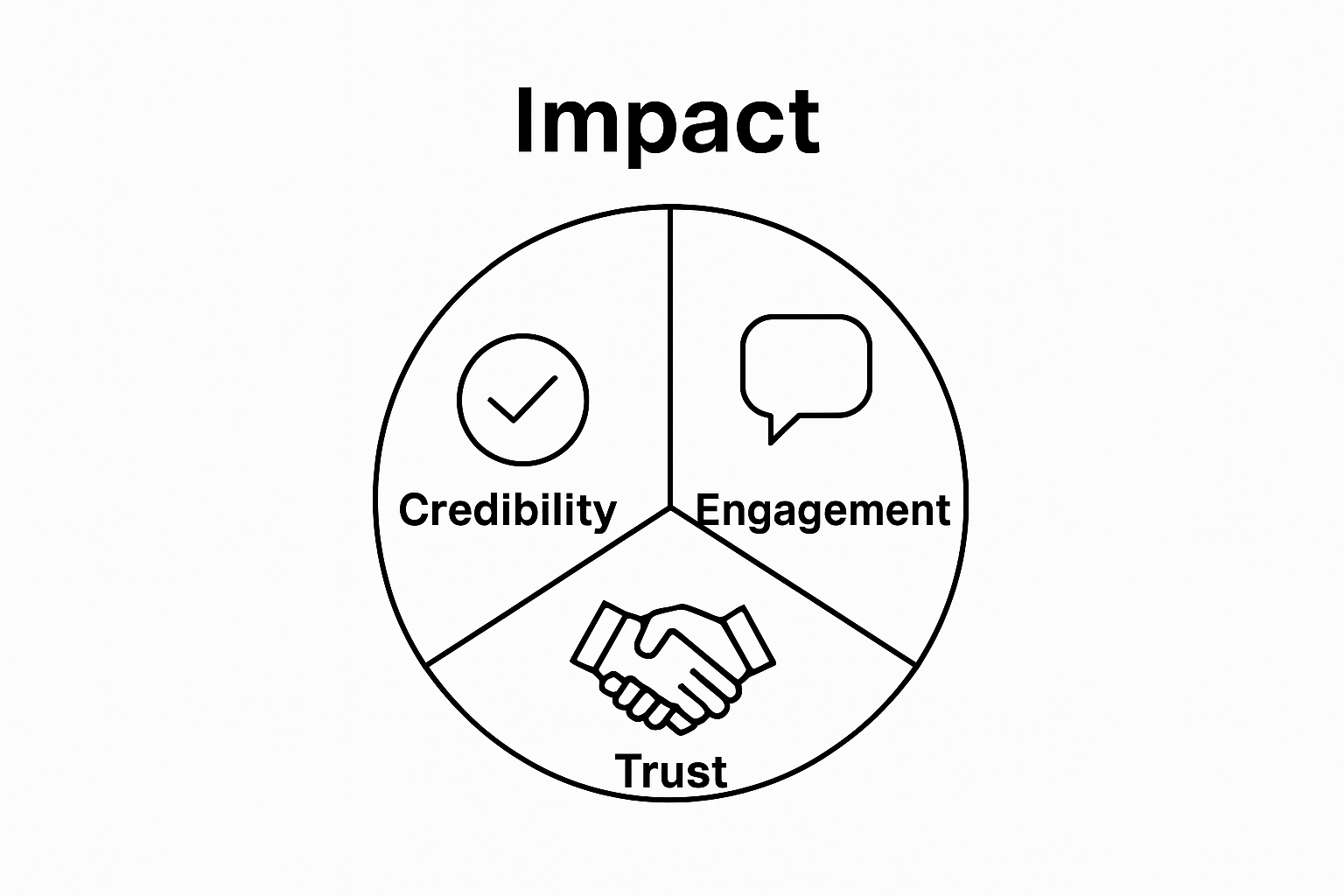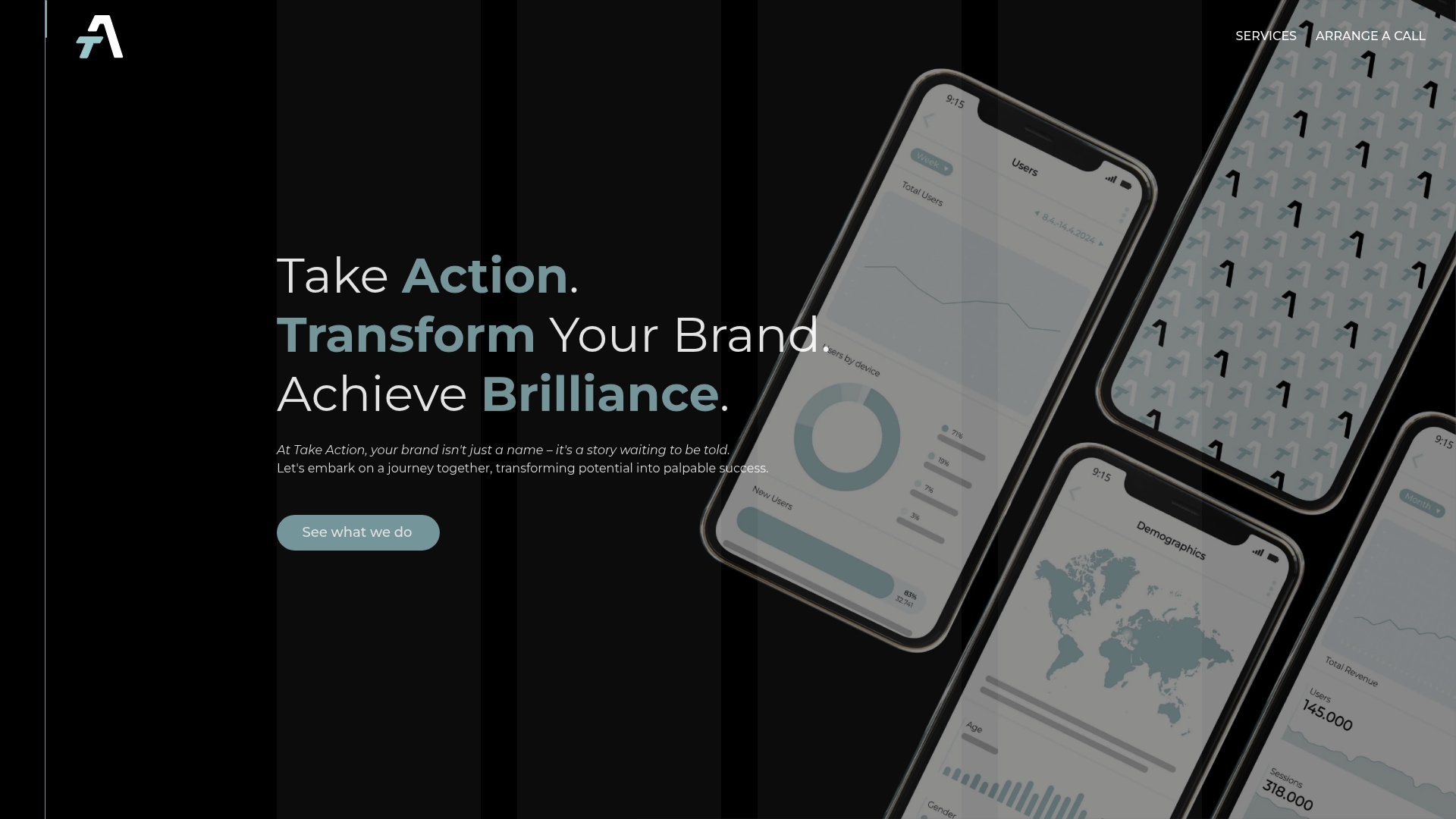Understanding Creating Educational Content for Brands
Brands are pouring resources into educational content because it does more than flaunt products. A recent study found that customer training can directly drive higher satisfaction and trust, a leap beyond old-school sales pitches. But most people still think educational content is just about teaching facts, when actually, it can turn casual browsers into lifelong fans and open doors to brand growth that traditional ads never reach.
Table of Contents
- What Creating Educational Content Means For Brands
- The Importance Of Educational Content In Customer Retention
- Key Concepts Behind Effective Educational Content Creation
- Real-World Applications Of Educational Content Strategies
- How Brands Can Leverage Educational Content For Growth
Quick Summary
| Takeaway | Explanation |
|---|---|
| Educational content builds brand trust. | By providing valuable insights, brands establish credibility and encourage long-term customer relationships. |
| Focus on audience-specific challenges. | Tailor content to address real customer problems, enhancing engagement and relevance. |
| Transform customers into brand advocates. | By consistently delivering educational value, customers are more likely to recommend and remain loyal. |
| Use diverse content formats for engagement. | Mixing formats like videos and articles caters to different learning styles and improves audience connection. |
| Measure success beyond traditional metrics. | Evaluate the impact of educational content using engagement and knowledge transfer indicators for continuous improvement. |
What Creating Educational Content Means for Brands
Creating educational content represents a strategic approach where brands develop informative materials designed to provide genuine value to their target audience while simultaneously establishing thought leadership and trust. Unlike traditional marketing content that primarily focuses on selling, educational content aims to solve problems, answer questions, and help consumers make informed decisions.
To help clarify the differences between educational content and traditional marketing content as presented in this section, the following table summarizes their core objectives and benefits.
| Content Type | Primary Focus | Audience Engagement | Relationship Outcome |
|---|---|---|---|
| Educational Content | Providing value, solving problems, sharing knowledge | Deep, trust-based | Builds long-term loyalty and advocacy |
| Traditional Marketing Content | Promoting products, driving immediate sales | Surface-level, short-term | Transactional, product-centric |
The Strategic Purpose of Educational Content
Brands use educational content as a powerful tool to connect with their audience on a deeper level. Research from the University of Zagreb demonstrates that this approach supports market expansion and creates new business opportunities by positioning the brand as a knowledgeable resource. The core objectives of educational content include:
-
Building credibility and authority in the industry
-
Addressing potential customer pain points
-
Demonstrating expertise without direct sales pressure
-
Fostering long-term audience engagement

Understanding Content Value and Audience Connection
Successful educational content goes beyond surface-level information. It requires a nuanced understanding of the audience’s challenges, interests, and knowledge gaps. Brands must craft content that feels genuinely helpful rather than overtly promotional. This means creating materials that answer real questions, provide actionable insights, and showcase the brand’s unique perspective.
By prioritizing educational value, brands can transform their marketing approach from interruption-based tactics to attraction-based strategies. Our guide on brand voice offers additional insights into developing authentic communication that resonates with your target audience. The goal is to become a trusted source of information that customers voluntarily seek out, rather than content they feel compelled to avoid.
The Importance of Educational Content in Customer Retention
Customer retention represents a critical metric for business success, and educational content has emerged as a powerful strategy to keep customers engaged, loyal, and invested in a brand’s ecosystem. Unlike traditional marketing approaches that focus solely on transactional interactions, educational content creates meaningful connections that transform customers from one-time buyers into long-term brand advocates.
Building Trust Through Knowledge Sharing
Research from Procedia of Theoretical and Applied Sciences highlights that customer training serves as a competitive advantage tool directly impacting customer satisfaction and trust. Educational content accomplishes this by demonstrating a brand’s commitment to customer success beyond the initial sale. Key benefits include:
- Establishing the brand as an authoritative resource
- Providing ongoing value that extends beyond product features
- Helping customers maximize their investment
- Creating emotional connections through helpful information
The Strategic Impact on Customer Loyalty
Effective educational content goes beyond surface-level information by addressing specific customer challenges and providing actionable insights. By consistently delivering high-quality, relevant content, brands can position themselves as partners in their customers’ success rather than mere vendors. Learn more about personalized engagement strategies that complement educational content approaches.
Customers who feel genuinely supported are more likely to remain loyal, recommend the brand to others, and continue investing in its products or services. This approach transforms educational content from a marketing tactic into a strategic retention tool that builds long-term relationships and drives sustainable business growth.

Key Concepts Behind Effective Educational Content Creation
Creating educational content is a nuanced process that requires strategic planning, deep understanding of audience needs, and a commitment to delivering genuine value. Brands must move beyond traditional marketing approaches to develop content that truly educates, engages, and empowers their target audience.
Foundational Design Principles
Research from the Organisation for Economic Co-operation and Development emphasizes the importance of learner-centered design in content creation. Effective educational content must be built on principles that prioritize audience comprehension and engagement. Critical design considerations include:
The following table outlines key design principles highlighted in the article that are foundational for creating effective educational content.
| Design Principle | Description |
|---|---|
| Learner-Centered Design | Prioritizes audience needs and comprehension |
| Alignment with Learning Objectives | Ensures content targets clear goals for knowledge transfer |
| Adaptability to Learning Styles | Addresses various ways audiences absorb and process content |
| Interactive and Multimedia Elements | Increases engagement through diverse content formats |
| Contextual and Practical Insights | Grounds information in real-world relevance for the audience |
- Alignment with clear learning objectives
- Adaptability to different learning styles
- Integration of interactive and multimedia elements
- Providing contextual and practical insights
Crafting Meaningful and Actionable Content
Successful educational content transcends mere information delivery. It requires a deep understanding of the audience’s challenges, knowledge gaps, and learning preferences. Brands must position themselves as trusted resources that not only share information but also provide actionable strategies and insights. Explore our guide on growing brand influence to understand how educational content can elevate your brand’s credibility.
The most impactful educational content transforms complex concepts into digestible, relatable narratives that resonate with the audience. By focusing on clarity, relevance, and practical application, brands can create content that genuinely helps their customers solve problems and achieve their goals.
Real-World Applications of Educational Content Strategies
Educational content strategies extend far beyond theoretical concepts, finding powerful applications across diverse industries and business contexts. These strategies transform how brands communicate, engage, and provide value to their audiences by bridging knowledge gaps and establishing meaningful connections.
Industry-Specific Implementation Approaches
Research from the ERIC database reveals compelling case studies demonstrating how educational content can drive tangible business outcomes. Different sectors leverage unique approaches to educational content, each tailored to their specific audience needs and communication objectives. Key implementation strategies include:
- Financial services providing investment literacy resources
- Healthcare organizations explaining complex medical concepts
- Technology brands offering user skill enhancement tutorials
- Sustainability companies educating consumers about environmental impact
Transforming Customer Relationships Through Knowledge
Successful educational content goes beyond traditional marketing by positioning brands as trusted advisors rather than mere product sellers. By developing comprehensive, accessible content that addresses genuine customer challenges, organizations can create deeper, more meaningful engagement. Explore our insights on increasing online sales to understand how educational strategies can directly impact business growth.
The most effective educational content strategies demonstrate a genuine commitment to customer success. They transform transactional relationships into collaborative partnerships, where brands actively invest in their customers’ understanding, skills, and personal or professional development. This approach not only differentiates brands but also builds long-term loyalty and trust.
How Brands Can Leverage Educational Content for Growth
Leveraging educational content is not merely a marketing strategy but a comprehensive approach to brand development, customer engagement, and sustainable business growth. By transforming traditional promotional tactics into valuable knowledge resources, brands can create meaningful connections that drive long-term success and customer loyalty.
Strategic Content Development Frameworks
Research from ERIC demonstrates that well-crafted educational content helps brands differentiate in crowded markets and accelerate growth through enhanced consumer empowerment. Successful brands develop strategic frameworks that prioritize audience learning and engagement through:
- Creating content that solves specific customer challenges
- Developing multi-format educational resources
- Mapping content to different stages of customer journey
- Establishing thought leadership in their industry
Measuring Impact and Continuous Improvement
Effective educational content requires ongoing analysis and refinement. Brands must implement robust measurement strategies that track not just traditional marketing metrics, but also deeper indicators of knowledge transfer and audience engagement. Discover strategies for boosting social shares to amplify the reach of your educational content and understand its broader impact.
The most successful brands view educational content as a dynamic, evolving conversation with their audience. By continuously adapting their approach, listening to customer feedback, and staying attuned to emerging industry insights, organizations can transform educational content from a marketing tactic into a powerful growth engine that builds genuine, trust-based relationships.
Transform Your Educational Content Into Retention Power With Take Action
Are you ready to turn your educational content strategy into a real advantage for customer engagement and retention? As discussed in your article, providing genuine value and building trust with audiences is more important than ever in today’s digital landscape. Many brands struggle to bridge the gap between meaningful knowledge sharing and achieving measurable business growth. If you want to go beyond surface-level content and establish long-term relationships, our approach can help you make every touchpoint count.

At Take Action, we specialize in converting thoughtful educational content into powerful email journeys. By blending automation, personalized segmentation, and expert Klaviyo strategy, we help you boost retention, recover lost sales, and keep your customers coming back. Get immediate results from strategic campaign design and revenue-boosting flows that align with your brand voice. Start building the trust and loyalty your content deserves. Visit our main site to unlock a smarter way to grow your audience and revenue right now.
Frequently Asked Questions
What is the purpose of creating educational content for brands?
Creating educational content aims to provide value to the target audience, establish thought leadership, and build trust without the direct pressure of selling.
How does educational content help in customer retention?
Educational content fosters meaningful connections and keeps customers engaged, turning one-time buyers into loyal brand advocates by demonstrating ongoing value and support.
What are the key elements of effective educational content?
Effective educational content should align with clear learning objectives, cater to different learning styles, include interactive elements, and provide practical insights that address audience challenges.
How can brands measure the impact of their educational content?
Brands can measure the impact by tracking traditional marketing metrics, such as engagement and conversion rates, as well as indicators of knowledge transfer and audience satisfaction.
Recommended
- Growing a Personal Brand: Boost Your Influence by 2025 | Take Action Blog | Take Action
- Understanding the Importance of Brand Voice for eCommerce | Take Action Blog | Take Action
- Influencer Marketing Explained: 2025 Guide for Business Growth | Take Action Blog | Take Action
- How to Boost Social Shares for Ecommerce Success | Take Action Blog | Take Action
- Understanding Creating Relevant Content for Your Audience
